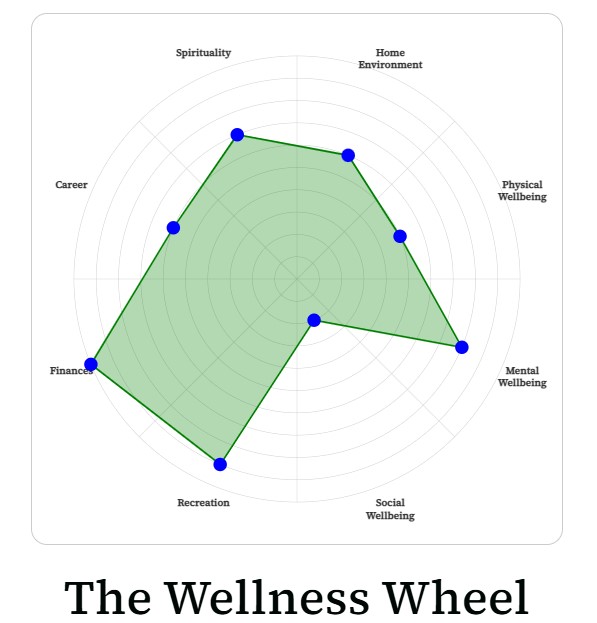How to Interpret Your Wellness Wheel Results

How to Interpret Your Wellness Wheel Results
If you’ve just completed your Wellness Wheel assessment—first of all, well done. Taking the time to reflect on your well-being across multiple life areas is a powerful first step toward intentional, full-spectrum living.
But now you might be wondering: What do I actually do with these results?
Let’s break it down.
1. Pause, Reflect, and Absorb
Before rushing into solutions or judgments, take a moment to sit with your results. Too often, we move through life at a fast pace, rarely pausing to check in with ourselves. Let this assessment be a mirror—not a measuring stick.
Instead of labeling scores as “good” or “bad,” ask yourself:
- What stands out?
- Where do I feel aligned?
- Where am I feeling out of balance?
The goal here is awareness, not criticism.
2. Ditch the Guilt, Embrace the Growth
This is not the moment to berate yourself for low scores or “underperforming” areas. The wheel is a snapshot, not a verdict. Instead of guilt, bring curiosity. What might this reveal about your current habits, environments, or needs?
Growth starts with honesty, not shame.
3. Choose 2 to 4 Areas to Focus On
Don’t try to fix everything at once. Choose two to four areas where you feel improvement would make a meaningful impact. These might be your lowest scoring areas, or they might just feel the most urgent or energizing to improve.
Once you’ve identified them, begin brainstorming small, specific actions you could take.
For example:
- If your Physical Wellness is low due to poor sleep, try setting a consistent bedtime or a screen-free wind-down routine.
- If your Emotional Wellness is depleted, maybe it’s time to reconnect with a therapist, start journaling, or schedule regular walks in nature.
4. Explore Interconnectedness
Each area on the Wellness Wheel affects the others. Nothing exists in isolation.
Let’s say your sleep is suffering—how might that be influencing your emotional resilience, your relationships, or your ability to focus at work?
This is where holistic thinking comes in. Begin to trace how one imbalance may ripple through other parts of your life—and how progress in one area can create uplift elsewhere.
5. Strategize and Seek Support
Once you’ve identified your focus areas and seen their impact, it’s time to strategize. Ask yourself:
- What are two or three concrete actions I can take this week?
- What habits or supports might help me stay consistent?
- What boundaries might I need to set?
And don’t be afraid to reach out. Whether it’s a friend, a family member, or a coach—sharing your intentions out loud adds accountability. In fact, studies show we’re far more likely to achieve our goals when we externalize them.
Final Thoughts
The Wellness Wheel isn’t just a one-time tool—it’s a conversation starter with yourself. It’s a way to reorient, recalibrate, and recommit to a life that’s intentional, balanced, and whole.
Keep checking in. Keep listening to yourself. And remember—wellness is a journey, not a destination.
Take the Leap
Start Your Journey
Transform your life today—book a session or subscribe for insights and inspiration.

